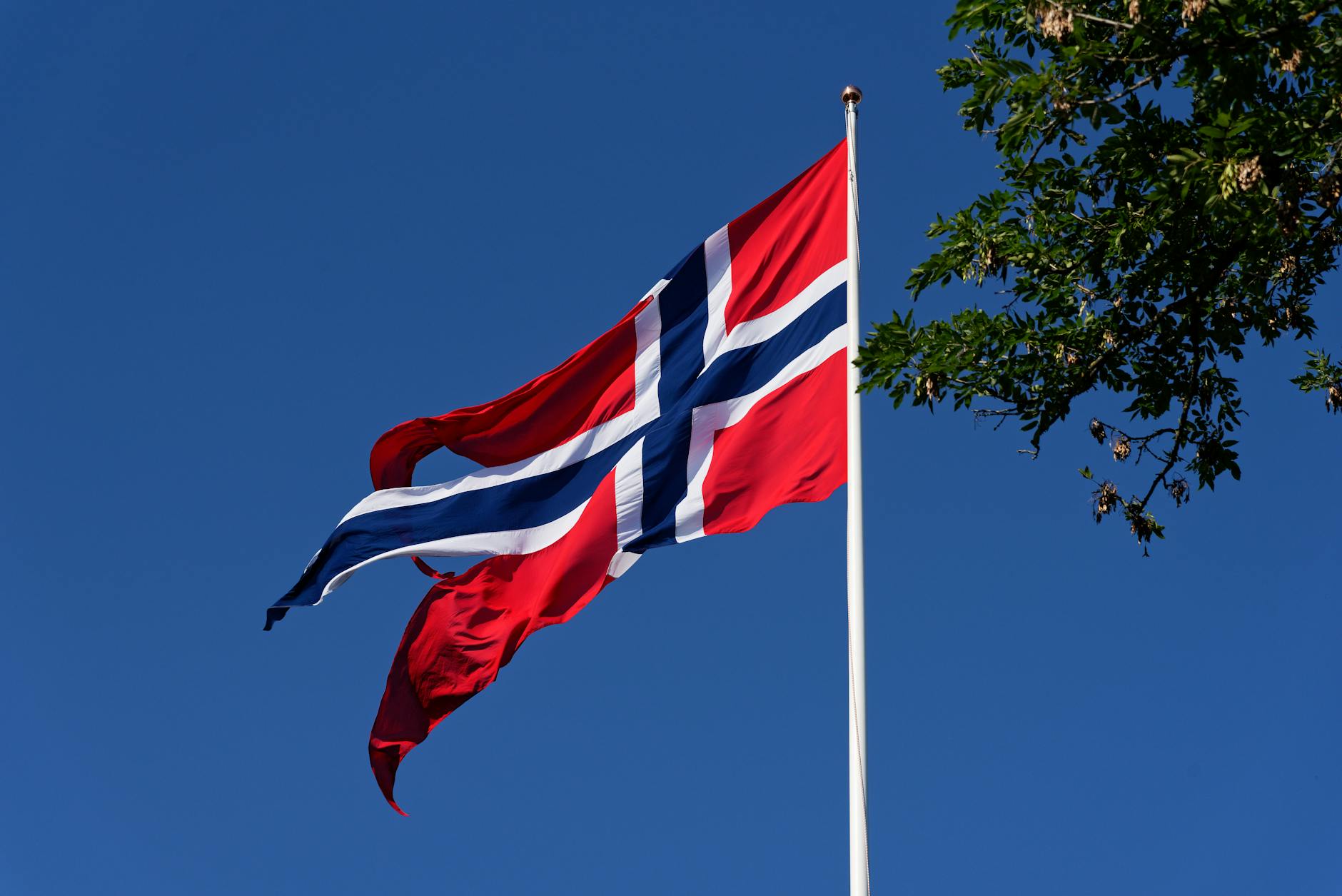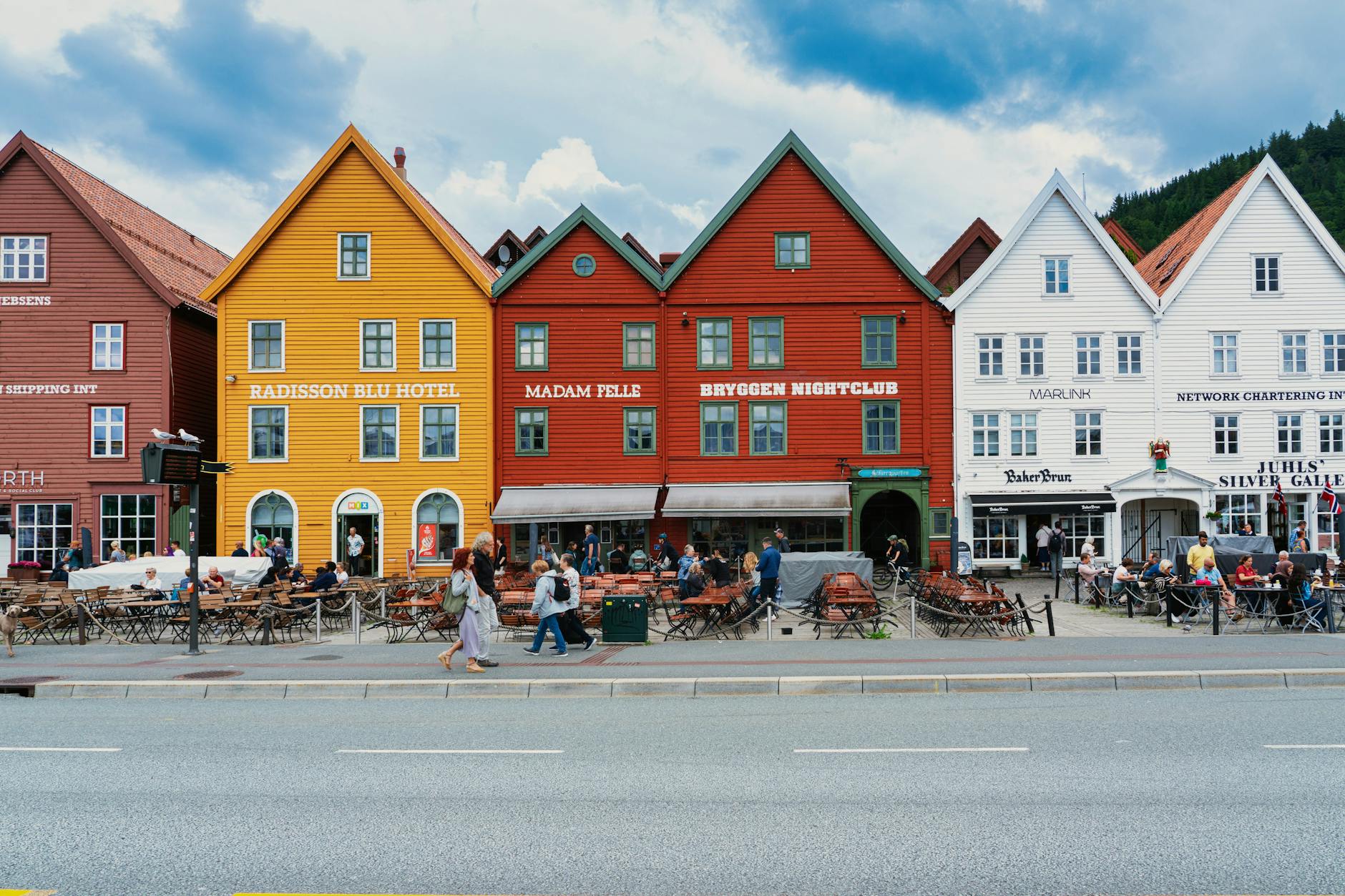
Having a multilingual website offers many benefits, particularly for businesses and content creators who want to reach a broader audience. When you translate your site into different languages, you make it easier for people from various linguistic backgrounds to engage with your content. This can lead to increased traffic, better user experiences, and, ultimately, more conversions.
Introduction: Benefits of Multilingual Websites and the Importance of Translation to Norwegian
Norwegian is one of the key languages to consider when expanding your website’s reach. Norway has a strong economy and a high standard of living, which makes it an attractive market for businesses looking to grow internationally. Additionally, Norwegian speakers are known for their technological literacy, meaning they are more likely to use the internet to find information, shop, and connect with others.
Translation to Norwegian
By translating your WordPress site to Norwegian, you tap into this dynamic market and demonstrate that you value diversity and inclusivity. It shows that you’re willing to go the extra mile to meet your audience’s needs, fostering a sense of connection and trust. This can be especially important if you offer products or services that are popular in Norway or have a significant Norwegian customer base.
Another benefit of multilingual websites is improved search engine optimization (SEO). When you provide content in multiple languages, you’re more likely to rank higher in search results for those languages. This can lead to increased visibility and more opportunities to attract visitors from different regions. With Norwegian being a prominent language in Scandinavia, translating your site can help you establish a foothold in this important European market.
Overall, translating your WordPress site to Norwegian can be a strategic move that enhances your brand’s appeal, increases accessibility, and opens up new business opportunities. It allows you to build stronger connections with Norwegian-speaking audiences and positions you for success in the digital landscape.
Source
Norwegian Language: Overview, History, and Structure
Norwegian is the official language of Norway and is spoken by over five million people. It’s a North Germanic language, closely related to Danish and Swedish, with a long history that has seen significant changes over the centuries. Here’s a closer look at the Norwegian language, its structure, vocabulary, grammar, and how easy it is to learn.

History of Norwegian
Norwegian has evolved significantly since its origins in Old Norse, the common language of the Vikings. After the Viking Age, Old Norse gradually transformed into Old Norwegian, which was used from around the 8th to the 14th century. Over time, Norway was influenced by Denmark, leading to a period where Danish became the dominant written language. It wasn’t until the 19th century that Norwegian began to re-emerge as a distinct written language.
During the early 20th century, two main forms of Norwegian developed: Bokmål and Nynorsk. Bokmål, which means “book language,” is derived from the Danish-influenced Norwegian used during Denmark’s rule over Norway. Nynorsk, or “new Norwegian,” is based on rural dialects and was created as an alternative to Danish-influenced Bokmål. Today, Bokmål is the more commonly used of the two, with about 85-90% of Norwegians using it for written communication.
Structure, Vocabulary, and Grammar
Norwegian has a relatively simple grammatical structure compared to other Germanic languages. It has a flexible word order and shares many similarities with English, making it easier for English speakers to learn. Norwegian nouns have three genders: masculine, feminine, and neuter. Unlike some other languages, Norwegian does not require a definite or indefinite article in front of names.
The vocabulary of Norwegian reflects its history and geography. It includes words derived from Old Norse, as well as loanwords from Danish, Swedish, German, and English. Because Norwegian has close ties with English, many words are easily recognizable to English speakers, making learning the language less daunting.
Ease of Learning Norwegian
Norwegian is often regarded as one of the easiest languages for English speakers to learn. This is because of its straightforward grammar, familiar vocabulary, and simple pronunciation rules. The lack of complex verb conjugations and tenses makes it easier to grasp the basics quickly. Furthermore, Norwegian’s close ties with Danish and Swedish allow speakers of one to understand much of the other two languages, making it a gateway to the broader Scandinavian region.
Norwegian offers a fascinating blend of history, simplicity, and cultural significance. Whether you’re learning it for business, travel, or communication, Norwegian provides a unique and rewarding language experience.
Source
Norwegian-Speaking People: Population, Countries, and Regions
Norwegian is the official language of Norway, a Scandinavian country known for its stunning landscapes, high quality of life, and progressive social policies. While Norway is the primary country where Norwegian is spoken, its influence extends beyond its borders due to migration, cultural exchange, and the global Norwegian diaspora. This section explores the population of Norwegian speakers, countries where Norwegian is an official language, and regions where Norwegian is commonly spoken.

Norwegian-Speaking Population
Norwegian is spoken by over five million people, primarily in Norway. The language is deeply integrated into Norwegian culture, with strong roots in the country’s history and identity. While the majority of Norwegian speakers reside in Norway, there are significant Norwegian-speaking communities worldwide, especially in regions with historical ties to Norwegian migration.
Countries Where Norwegian Is an Official Language
Norway is the only country where Norwegian is the official language. However, within Norway, there are two written standards: Bokmål and Nynorsk. These standards reflect the linguistic diversity of the country, with Bokmål being more widely used and Nynorsk having a smaller but significant presence, especially in Western Norway.
In Norway, both Bokmål and Nynorsk are taught in schools, and individuals can choose which standard to use for official communication. This duality highlights the rich linguistic heritage within the country and demonstrates a commitment to preserving cultural diversity.
Norwegian-Speaking Communities Worldwide
Norwegian-speaking communities can be found in various countries, especially in regions with a history of Norwegian immigration. The United States, for example, has a significant Norwegian-American population, with many people tracing their roots back to Norwegian settlers who arrived in the 19th and early 20th centuries. States like Minnesota, Wisconsin, and North Dakota have strong Norwegian-American communities that celebrate their heritage through festivals, cultural events, and language preservation efforts.
Other countries with notable Norwegian-speaking communities include Canada, Australia, and the United Kingdom. These communities may consist of Norwegian expatriates, descendants of Norwegian immigrants, or people who have learned Norwegian for business or personal reasons.
Importance of Norwegian in a Global Context
While Norwegian is primarily spoken in Norway, its influence extends globally through the Norwegian diaspora and cultural connections. The presence of Norwegian-speaking communities in various countries fosters cross-cultural exchange and strengthens international ties. This global network of Norwegian speakers also contributes to the spread of Norwegian culture, traditions, and values.
Overall, the population of Norwegian speakers is diverse and extends beyond Norway’s borders, creating a rich tapestry of linguistic and cultural connections. Whether in Norway or abroad, Norwegian speakers share a unique bond rooted in their language and heritage.
Norwegian on the Internet: Prevalence and Importance
Norwegian, the official language of Norway, has a significant presence on the internet, reflecting the country’s high levels of internet usage and digital literacy. Let’s review how widespread Norwegian is online, why having a Norwegian version of your website is crucial, and the benefits of catering to Norwegian-speaking audiences.

Prevalence of Norwegian Online
Norway ranks among the top countries for internet penetration, with over 98% of the population having access to the internet. As a result, Norwegian is widely used across various online platforms, including websites, social media, and online forums. Given Norway’s high standard of living and advanced technology infrastructure, it’s no surprise that the internet is deeply integrated into Norwegian daily life.
Many Norwegian-language websites cover a range of topics, from news and entertainment to education and business. Norwegian is also prominent on popular social media platforms like Facebook, Instagram, and Twitter, where Norwegian speakers connect, share content, and engage with brands. This extensive online presence makes it essential for businesses and content creators to offer a Norwegian version of their websites to reach this engaged audience.
Importance of a Norwegian Website
Having a Norwegian version of your website can be a strategic advantage for several reasons:
- Accessibility and Inclusivity: A Norwegian website ensures that your content is accessible to Norwegian-speaking users, fostering inclusivity and a better user experience. It allows you to connect with Norwegian audiences on a personal level, which can enhance brand loyalty and customer satisfaction.
- Market Expansion: Norway has a strong economy, and its residents have significant purchasing power. By offering a Norwegian version of your site, you tap into this lucrative market, expanding your reach and increasing the potential for sales and partnerships.
- SEO Benefits: Providing content in Norwegian can improve your website’s search engine optimization (SEO). Norwegian users are more likely to search for information in their native language, and a localized website can help you rank higher in Norwegian search results, attracting more visitors.
- Cultural Relevance: A Norwegian website allows you to create content that resonates with Norwegian culture and values. This cultural alignment can strengthen your brand’s appeal and build deeper connections with your audience.
Benefits of Translating to Norwegian
Translating your website to Norwegian can be a game-changer, especially if you’re targeting the Scandinavian market. It demonstrates your commitment to reaching a diverse audience and shows that you’re willing to invest in providing a tailored experience for Norwegian speakers. This can lead to increased engagement, customer trust, and ultimately, business growth.
Norwegian’s strong online presence makes it a language worth considering for website translation. By offering a Norwegian version, you position your brand for success in a digitally connected world.
Source
How to Translate a WordPress Site to Norwegian
Translating a WordPress site to Norwegian can seem daunting, but with the right approach and tools, you can make the process efficient and effective. Here are some major ways to translate a WordPress site to Norwegian and Autoglot, a WordPress translation plugin that provides a seamless way to achieve automatic translations.

Major Methods for Translating WordPress to Norwegian
When it comes to translating a WordPress site to Norwegian, you have several options to consider:
- Manual Translation:
This method involves manually translating each piece of content on your site. It gives you the most control over the translation’s accuracy and quality, but it can be time-consuming and labor-intensive. Manual translation is often preferred for smaller websites or specific pages where you need precise translations. - Multilingual Content Management:
This approach uses WordPress plugins to manage content in multiple languages. Plugins like WPML and Polylang let you create and manage multilingual content within your WordPress site. This method is more flexible than manual translation but requires careful setup and ongoing management. - Automatic Translation:
Automatic translation uses software tools to instantly translate your website’s content into Norwegian. While this method may not always provide the same level of accuracy as manual translation, it’s fast and convenient. It’s a popular choice for websites with large amounts of content or frequent updates.
Autoglot: An Ideal Plugin for Translating to Norwegian
Autoglot is a WordPress translation plugin designed to simplify the process of translating your site into various languages, including Norwegian. It offers several benefits that make it an excellent choice for website owners looking to create a Norwegian version of their site:
- Automatic Translation: Autoglot translates your WordPress site automatically, saving you time and effort. It can translate entire pages, posts, and even menus, allowing you to quickly offer a Norwegian version of your site.
- Cost-effeciency: Unlike many other translation plugins, Autoglot does not require monthly subscription simply in order to show your translated content. Once you translated your site, the usage is completely free!
- Language Customization: Autoglot supports multiple languages, and you can choose Norwegian from the list to translate your site. It also provides customization options to fine-tune translations to meet your specific needs.
- Integration with WordPress: The plugin is designed to work seamlessly with WordPress, ensuring compatibility with most themes and other plugins. This integration makes it easy to set up and use.
- Automatic Updates: Autoglot receives regular updates to ensure translations remain accurate and the plugin functions correctly as WordPress evolves.
By choosing Autoglot for your WordPress site, you can automate the translation process and maintain a high-quality Norwegian version with minimal effort.
Source
This approach is ideal for businesses and content creators who want to reach Norwegian-speaking audiences without spending extensive time and resources on manual translations.
Step-by-Step Guide to Translating a WordPress Site to Norwegian with Autoglot
Translating a WordPress site to Norwegian using the Autoglot plugin is a straightforward process that requires just a few steps. This step-by-step guide walks you through the essential steps to get your site translated and up and running in Norwegian.
Step 1: Install the Autoglot Plugin
Start by installing the Autoglot plugin on your WordPress site. Here’s how to do it:
- Open your WordPress admin dashboard.
- Go to “Plugins” and click “Add New.”
- In the search bar, type “Autoglot.”
- Find the Autoglot plugin in the search results and click “Install Now.”
- Once installed, click “Activate” to enable the plugin on your site.
With the Autoglot plugin installed and activated, you’re ready to move on to the next step.
You may also download Autoglot directly from the official WordPress plugins repository.
Source
Step 2: Register in the Autoglot Control Panel
To use the Autoglot plugin, you need to register and create an account in the Autoglot Control Panel:
- In the WordPress admin dashboard, locate the Autoglot plugin in the menu and click on it.
- You will be redirected to the Autoglot Control Panel website.
- Create an account by providing your email address and a password.
- After registering, you will receive a confirmation email. Click the link in the email to verify your account.
After completing the registration, you can begin configuring the Autoglot plugin to translate your WordPress site to Norwegian.
Autoglot Control Panel lets you control your translation expenses, track usage and order new translation packages.
Source
Step 3: Configure the Autoglot Plugin
With your Autoglot account set up, it’s time to configure the plugin for translating your site to Norwegian:
- Return to the WordPress dashboard and go to the Autoglot plugin settings.
- Enter your free API key that you received in Autoglot Control Panel.
- Choose Norwegian as the language to translate your site into.
- Configure additional settings as needed, such as language switcher, sitemap and hreflangs settings, etc.
- Click “Save” or “Apply” to finalize your configurations.
Once you’ve configured the Autoglot plugin, it will begin translating your site to Norwegian based on your settings.
Step 4: Check the Results
After Autoglot completes the translation, review your site to ensure everything looks correct:
- Visit the Norwegian version of your site and navigate through the pages and posts.
- Check for translation accuracy and ensure the formatting and layout are consistent with the original.
- Make adjustments as needed in the Autoglot Control Panel if you find any issues with the translation.
If everything looks good, your WordPress site is successfully translated to Norwegian. If you find any problems, you can use the Autoglot plugin’s customization features to correct them.
Following these steps, you can quickly and efficiently translate your WordPress site to Norwegian using the Autoglot plugin. This step-by-step guide should help you get started and create a multilingual website that caters to a broader audience.
Challenges and Benefits of Translating WordPress Sites to Norwegian
Translating a WordPress site to Norwegian offers significant benefits but comes with a few challenges. Here are some of the advantages of a multilingual site, common obstacles, and why Autoglot is a great solution for website translation.
Benefits of Translating to Norwegian
- The primary benefit of translating your website to Norwegian is reaching a broader audience. Norway has a high internet penetration rate, and Norwegian speakers are tech-savvy, making it an attractive market for businesses and content creators. By providing a Norwegian version of your site, you can increase engagement, attract new customers, and improve your brand’s visibility in Scandinavia.
- Another benefit is improved search engine optimization (SEO). Translating your site to Norwegian allows you to rank higher in Norwegian-language search results, driving more traffic to your site. This can lead to greater visibility and, ultimately, more business opportunities.
Challenges in Translating to Norwegian
While the benefits are substantial, there are a few challenges to consider.
- The primary challenge is ensuring the accuracy of translations. Manual translation can be time-consuming and expensive, while automatic translation may not always capture the nuances of the language. Maintaining a consistent tone and style across different languages can also be difficult.
- Another challenge is managing multilingual content. You must ensure that your site structure supports multiple languages and that visitors can easily switch between them. This requires proper plugin setup and ongoing maintenance.
Autoglot: The Ideal Solution
Autoglot addresses many of these challenges by offering an automatic translation solution for WordPress. It provides a simple and efficient way to translate your site into Norwegian while maintaining accuracy and consistency. With features like language customization and seamless integration with WordPress, Autoglot makes it easy to manage multilingual content without extensive technical knowledge.
If you’re looking to translate your WordPress site to Norwegian, Autoglot is an excellent choice. It offers a hassle-free way to create a multilingual site and tap into the Norwegian-speaking market. Install Autoglot today and start reaching a broader audience with your WordPress site.



